The square: every town’s gathering place par excellence, always the beating heart of social life and a historical nucleus towards which all the main streets of the city converge with their buildings. If there is an Italian city rich with spaces of this kind, striking and characteristic squares, well that would be the Eternal City, Rome.
Piazza del Popolo is certainly among the most beautiful squares of the city. In ancient times, the famous Porta del Popolo, formerly called Porta Flaminia, was one of the main access points to the city. Porta del Popolo opens today on this elliptical urban space, always visited by the many visitors who come every year to the capital.
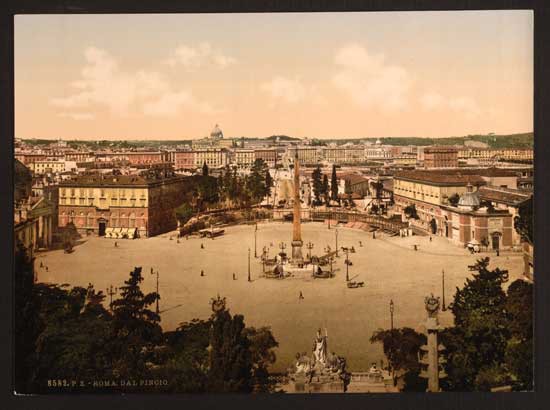
Piazza del Popolo, 1890/1900
Its name is linked to the presence of the neoclassical church of Santa Maria del Popolo, which houses particularly important works of art, such as the two paintings by Caravaggio, the Conversion of St. Paul and the Crucifixion of St. Peter.
The physiognomy of the piazza, with its spectacular and harmonious effect, and its monuments are the work of the architect Giuseppe Valadier, to whose genius we owe many interesting spots in Rome. Those who arrive in Piazza del Popolo are struck by the presence of a massive obelisk, the Flaminio obelisk, built under the reign of the Egyptian pharaoh Ramses II and currently located in the centre of this space. From the urban point of view, the square constitutes an important hub. Several particularly popular streets branch off from here: via del Babuino, Via di Ripetta, Via del Corso.
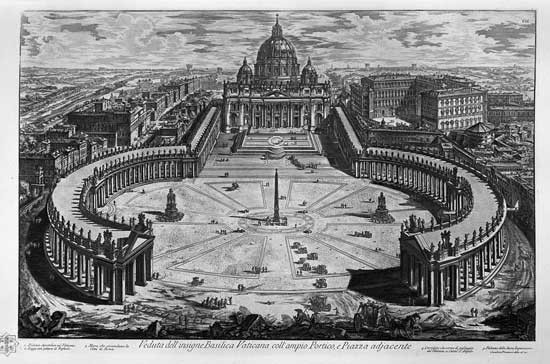
Giovanni Battista Piranesi, Vedute di Roma. Piazza San Pietro.
Among the most famous squares of Rome and of the world is also St. Peter’s Square, located directly in front of the Basilica that goes by the same name, built to commemorate the first Christian Pope, the martyr Peter. This is one of the most important pilgrimage places for the Christian community, and its square welcomes the faithful, tourists, lovers of art and architecture. It was Bernini who designed the square with its wonderful colonnade during the seventeenth century.
Here too, like in Piazza del Popolo, one is struck by the presence of a massive obelisk, the obelisk of Heliopolis, and of two fountains, whose style blends perfectly with the general appearance of the square.
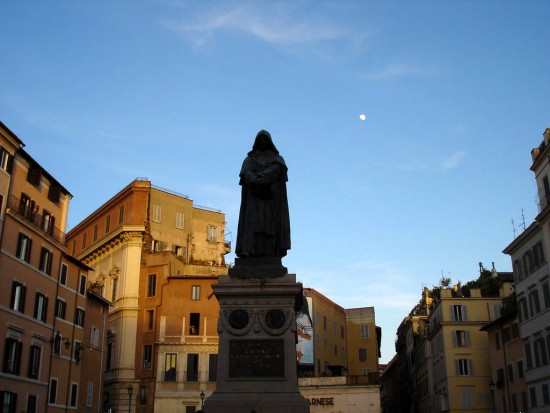
Campo de Fiori.
There is a less known square than the previous one, which does not host Christian places of worship but a monument dedicated to a philosopher. It is Campo de’ Fiori and the philosopher in question is the Dominican friar Giordano Bruno, who lived in the seventeenth century.
He was sentenced to death for heresy and his execution took place in this piazza. Today Campo ‘de Fiori is a quaint place, home to a local food market, popular especially at night, when many visitors, but also non-residential students, spend time in the bars and pubs that scatter the square and the surrounding areas.
Another important square in the capital is Piazza Navona. What impresses here is the beauty of the buildings, the aesthetic aspect of a place designed in baroque style.
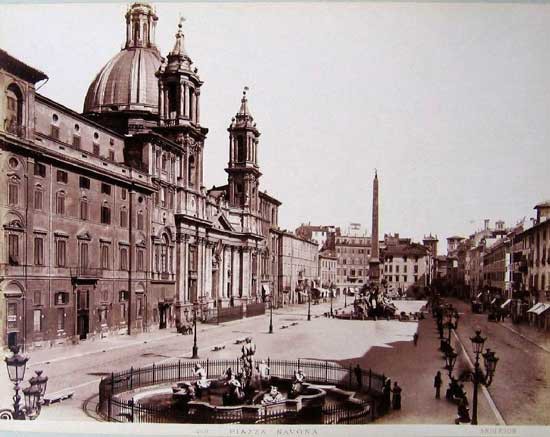
Piazza Navona.
Bernini’s Fountain of the Four Rivers, the Fountain of the Moor, the Fountain of Neptune, as well as Borromini’s Church of St. Agnes in Agony are among the monuments that make the square so famous from an artistic and cultural standpoint.
During the Christmas season this urban space becomes very busy due to the many stalls that exhibit some of this festivity’s most typical products together with the usual souvenirs. Street artists and portraitists expose their work here, depicting views of the square and making portraits and caricatures of the tourists.
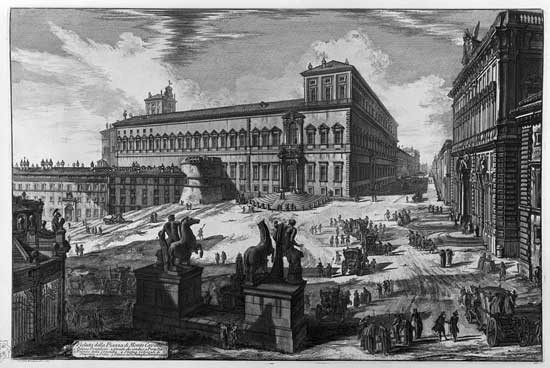
Giovanni Battista Piranesi, Piazza del Quirinale.
As you know, one of the highest hills of the city of Rome is the Quirinale. Today this site important to the political life of the country, home to the Palazzo del Quirinale, the official seat of the President of the Republic, in the same space that once was the residence of the popes. Here too, in Piazza del Quirinale rises an obelisk next to a marble sculpture of great artistic value dedicated to Castor and Pollux with their horses. It is not by chance that in ancient times the square was called Piazza di Monte Cavallo (Square of Horse Hill) because of this characteristic monument.
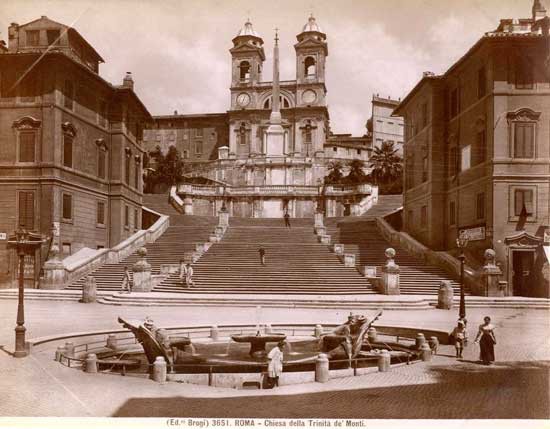
Giacomo Brogi, Chiesa della Trinità dei Monti (Piazza di Spagna).
Those visiting Rome cannot leave without seeing the wonderful Piazza di Spagna, recently at the centre of unpleasant incidents regarding the fountain of “La Barcaccia”, violated by vandals.
Piazza di Spagna is found at the bottom of the stairway of Trinità dei Monti, crowded at any time of day. The Fountain of “la barcaccia”, designed by Pietro and Gian Lorenzo Bernini in memory of a flood that hit the city in the sixteenth century, is one of the most beautiful monuments of this urban space packed with a constant flow of tourists all year round.
Here we find bars and famous cafés, and from here depart the most characteristic streets of Rome, home to many shops and boutiques dedicated to the world of haute couture.


